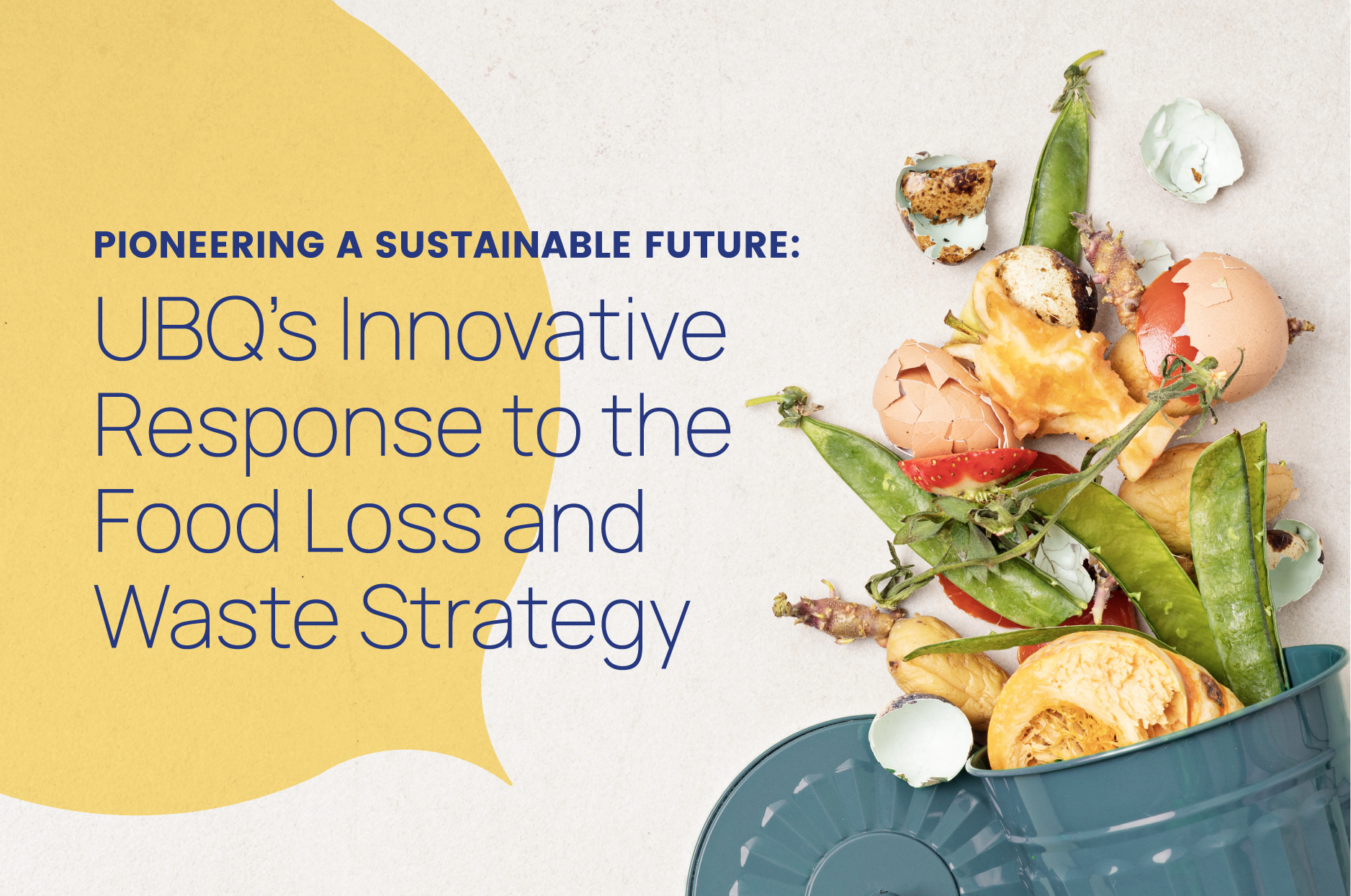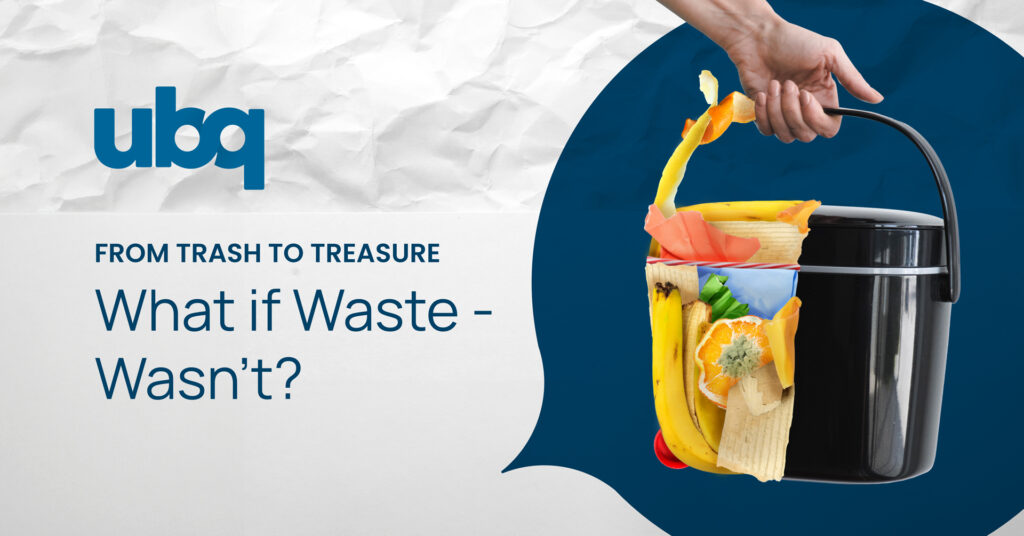In a time where the call for sustainability is paramount, the U.S. Environmental Protection Agency (EPA) has been at the forefront of addressing a pivotal yet frequently neglected environmental challenge: food loss and organic waste falling outside the realms of the circular economy.
The EPA’s Draft National Strategy for Reducing Food Loss and Waste and Recycling Organics is a call to action to address this challenge, aiming to transform our approach to envision a world where organic resources are utilized efficiently, rather than wasted.
Among the strategy’s contributors, showcasing its innovative technology and distinctive approach to integration with existing initiatives and policies, thereby, enhancing the collective efforts to repurpose organic waste.
UBQ’s Alignment with EPA Objectives
At the heart of UBQ’s mission is a commitment to two key objectives outlined by the EPA:
- Increasing the recycling rate for all organic waste
- Supporting policies that incentivize food loss and waste prevention and organics recycling.
The disposal of food waste and other organic materials in landfills is not only squanders finite resources but also significantly contributes to methane generation, a greenhouse gas approx. 80 times more potent than carbon dioxide. In the waste sector, methane, is primarily produced from the decomposition of organics in landfills, prompting the EPA to release a report and statement emphasizing that diverting food from landfills plays a crucial role in combating climate change.
UBQ’s response to the EPA’s strategy draft is a testament to our commitment to addressing these critical issues and our ambition to play a leading role in finding solutions within the US.
The Challenge of Recycling
In a recent report, the EPA has introduced a new hierarchy of wasted food pathways, giving priority to source reduction, donation, animal feed, and other recycling options. This places organic recycling methods such as composting in the middle tier, with residuals destined for landfill or combustion as the least preferred options (EPA Report: From Field to Bin: The Environment Impacts of U.S. Food Waste Management Pathways. October 2023. Chapter 2, page 42)
To effectively address this hierarchy, it’s crucial to grasp the workings of conventional recycling systems.
Upcycling and recycling rely heavily on the thorough separation of streams and does not perform optimally when various elements are mixed. For example, in plastic recycling, proper separation of organics is crucial to prevent organic components from “contaminating” the plastic stream.
This principle applies similarly to the repurposing or recycling of organics, as even small pieces of plastics or other non-organic materials such as glass or metals can diminish the viability of the organic stream for effective reuse.
This concept is widely referred to as the “tolerance level” of recycling systems. Essentially, the high-tier solutions outlined by the EPA inherently possess a lower tolerance level.
The Challenge of Organic Waste
Food waste sources can be categorized into two main groups:
Pre-consumer waste, originating from manufacturers and processors, is typically purer and more amenable to direct reuse or recycling.
In contrast, post-consumer waste, especially from residential sources or food service businesses, often contains contaminants that pose significant challenges to traditional recycling methods like Anaerobic Digestion (AD) and Composting. Additionally, packaging poses an obstacle for effective organic recycling, especially since supermarket leftovers are typically packaged.
As a result, more than 80% of post-consumer food waste is directed to landfills (59.84%), incineration (14.57%), or wastewater treatment (6%), in stark contrast to just 3.11% of pre-consumer waste being disposed of through these methods. That amounts to more than 53 million tons of waste annually from the 66 million tons of post-consumer food waste generated. (Figures taken from the EPA 2019 Waste Food Report: Estimates of generation and management of wasted food in the US in 2019. April 2023.)
UBQ’s Revolutionary Solution
UBQ Materials has introduced a technology that promises to revolutionize the recycling of post-consumer food waste. By converting this waste into a sustainable, bio-based material, UBQ’s solution addresses the inefficiencies of current disposal methods, which see a significant portion of post-consumer waste ending up in landfills or incineration facilities.
This technology not only diverts organic waste from low-efficiency linear solutions but also boosts recycling rates and provides a sustainable alternative to conventional plastics.
UBQ’s process is energy-efficient and sustainable, contributing to the economic growth of communities by treating waste as a resource. This innovative approach has the potential to transform waste management practices, making a significant impact on environmental sustainability and public health.
Addressing the issue of non-recyclable post-consumer food waste, UBQ technology’s entry into the U.S. market is designed to divert organic waste from landfills and inefficient disposal methods that affect the environment and disadvantaged communities, enhance recycling efforts without hindering current systems, turn waste into a resource that creates local green jobs, and offer a sustainable, bio-based alternative to traditional plastics.
To learn more about how UBQ is making a difference with its innovative approach, read our detailed submission here (and click the ‘Download’ button).


